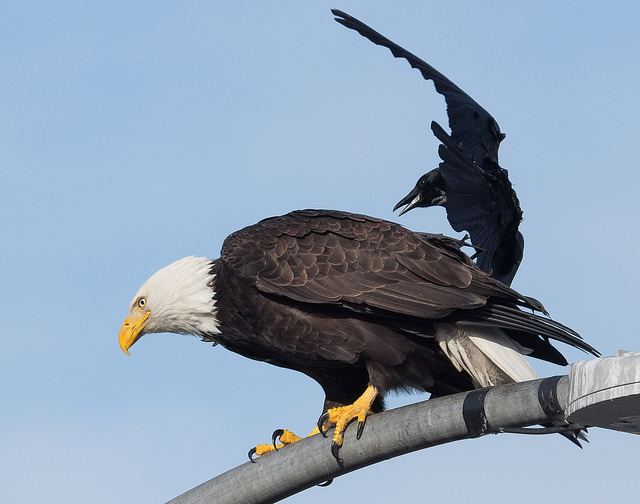Podcast: Play in new window
BOB HIRSHON (host):

Crow mobs. I’m Bob Hirshon and this is Science Update.
Crows can often be seen chasing after hawks. But why do something that puts themselves in danger? University of Washington wildlife scientist John Marzluff explains that on balance, mobbing, which rarely leads to fatalities, can be worth the risk.
JOHN MARZLUFF (University of Washington):
There is a great benefit and that is it moves a predator out of an area. It also has probably a social benefit, and that is the birds that are typically involved in the most aggressive mobbing are probably demonstrating their dominance. In these corvid societies there’s oftentimes the need to re-advertise or re-eestablish your dominance.
HIRSHON:
In laboratory studies, Marzluff and his team have shown that when a crow sees a hawk, an area of the brain involved in decision-making becomes active. This suggests that they actively calculate the risks and benefits of mobbing in different situations. I’m Bob Hirshon, for AAAS, the science society.
